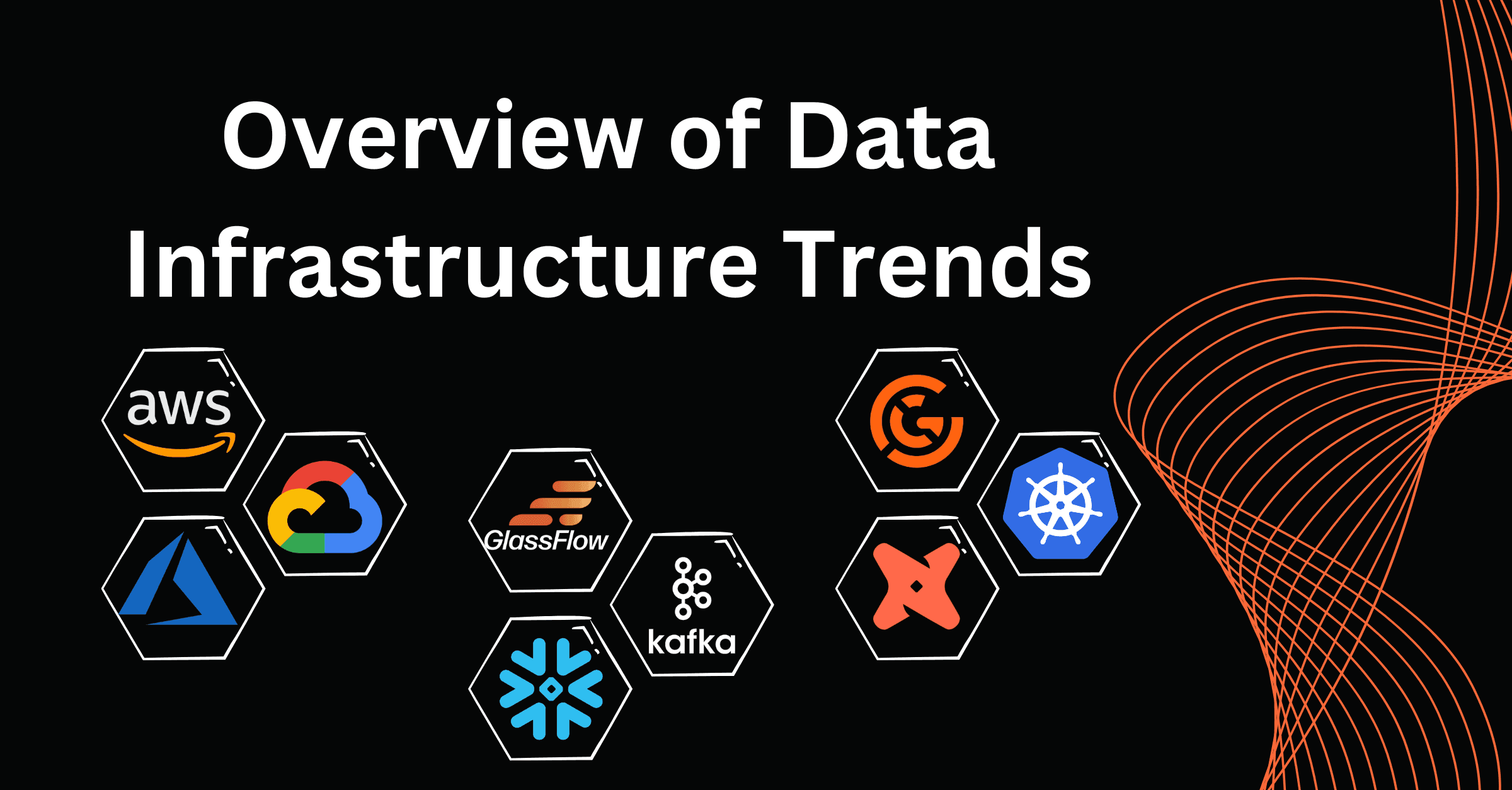Data Infrastructure Trends You Should Know About
Data infrastructure is what keeps today’s businesses running. It’s how companies store, process, and analyze the vast amounts of data they need to make informed decisions. With more organizations relying on data to guide their choices, having a solid and scalable data infrastructure isn’t just nice to have—it’s essential.
In this article, we’ll dive into the latest trends in data infrastructure. From real-time processing to AI-driven insights, these are the shifts shaping how businesses handle data. By staying ahead of these trends, you can set your organization up for success in an increasingly data-driven world.
Why Data Infrastructure Matters
Think of data infrastructure as the foundation for how organizations manage their data. It includes everything from storage and processing systems to the tools used for analysis. As businesses lean more on data to drive decisions, having reliable infrastructure helps them operate smoothly, scale efficiently, and stay competitive.
So, what’s changing? The big trends include real-time data processing, distributed systems, and a stronger focus on data governance and quality. Cloud computing has been a game-changer here, making it easier for businesses to access scalable tools and analytics. By aligning with these trends, you can unlock better insights and keep ahead of the competition.
What’s Happening in Data Infrastructure Today
We’re living in a time when data generation is off the charts, and businesses need smarter ways to keep up. Traditional on-site servers are being replaced by hybrid and cloud-based systems, which are more flexible, scalable, and cost-effective. Giants like AWS, Google Cloud, and Microsoft Azure dominate this space, offering everything from storage to analytics.
These cloud providers also drive innovation with managed services like Kubernetes (for orchestrating containers), Apache Spark (for big data processing), and Snowflake (for data warehousing). And thanks to machine learning and AI tools, even smaller companies can now leverage advanced analytics.
Of course, there are still hurdles. Data silos, latency, and security concerns can slow things down, and keeping up with the rapid pace of technology is a challenge. That’s why strategic planning is key to staying ahead.
The Top Trends to Watch
1. Real-Time Data Processing
Real-time data processing is no longer a luxury—it’s becoming a must. It’s what powers instant fraud detection, predictive maintenance, and hyper-personalized customer experiences. For companies that find traditional message brokers like Apache Kafka too complex, tools like Glassflow offer a simpler alternative. Glassflow lets you build real-time pipelines without worrying about the setup or maintenance, so you can focus on results.
2. Distributed Architectures
Distributed systems spread out data and processing tasks across multiple nodes, making them more scalable and fault-tolerant. Tools like Hadoop, Cassandra, and Kubernetes make handling large-scale data easier. But beware—distributed systems can introduce complexity, from network delays to keeping everything in sync.
3. Accountable Data Governance
With stricter privacy regulations and growing concerns about data misuse, governance is top of mind for many organizations. It’s all about having clear rules for who can access data and how it’s used. Tools like Collibra and Alation are leading the charge, helping businesses manage governance at scale while staying compliant with laws like GDPR and CCPA.
4. Data Quality and DataOps
Bad data leads to bad decisions. That’s why ensuring high-quality data is critical. DataOps—a set of practices that combine automation, monitoring, and collaboration—helps organizations maintain clean, reliable data pipelines. Tools like Great Expectations and dbt (data build tool) make it easier to enforce quality standards and catch problems early.
How AI is Changing the Game
AI is revolutionizing data infrastructure by automating tedious tasks, improving resource use, and enabling more advanced analytics. For example, machine learning models can predict bottlenecks, optimize storage, and even generate synthetic data.
Generative AI, in particular, is shaking things up. It can automate tasks like data cleaning and report generation, saving time and democratizing analytics for non-technical users. Tools like OpenAI's Codex and Google’s Bard are great examples of this innovation in action.
That said, using AI isn’t without challenges. You’ll need to manage things like algorithmic bias, computational costs, and the ethical implications of using AI. But with the right investments in scalable infrastructure and monitoring tools, the benefits far outweigh the risks.
Customizing Data Infrastructure for Your Industry
Every industry has its own unique challenges when it comes to data. That’s where verticalization comes in—creating data solutions tailored to specific needs.
For example:
- Healthcare: Managing electronic health records (EHRs) while staying HIPAA-compliant.
- Finance: Building systems for fraud detection and risk management.
- Retail: Leveraging customer data for personalized marketing.
Companies like Palantir and Snowflake are already offering industry-specific solutions, and this trend is only going to grow.
Looking Ahead: Innovation and What’s Next
The future of data infrastructure is all about innovation. Cloud providers are snapping up niche tech companies to expand their offerings, and new technologies like serverless computing, edge processing, and even quantum computing are on the horizon.
To keep up, businesses need to stay flexible. Keep an eye on emerging trends, invest in adaptable tools, and don’t be afraid to experiment.
Final Thoughts
Data infrastructure is evolving fast. Real-time processing, distributed architectures, AI, and verticalized solutions are reshaping the landscape. To stay competitive:
- Invest in tools that make real-time data processing easy (like Glassflow!).
- Embrace distributed systems while staying mindful of governance challenges.
- Focus on data quality with DataOps practices.
- Explore AI-driven tools to streamline operations.
- Tailor solutions to your industry’s unique needs.
If you’re looking for a simple way to handle real-time data without the headaches of setup and maintenance, check out Glassflow. It’s designed to make building data pipelines fast, easy, and efficient.
Stay ahead of the curve and start transforming your data infrastructure today.
FAQs
Q1: What is data infrastructure?
Data infrastructure encompasses the technologies and systems used to store, manage, process, and analyze data, enabling organizations to derive actionable insights.
Q2: How does real-time data processing improve decision-making?
Real-time data processing enables organizations to respond to changing conditions immediately, facilitating applications like fraud detection and personalized customer experiences.
Q3: What role does AI play in data governance?
AI enhances data governance by automating compliance checks, detecting anomalies, and ensuring data integrity.
Q4: What are the benefits of distributed architectures in data management?
Distributed architectures improve scalability, fault tolerance, and processing efficiency, enabling organizations to manage large-scale data effectively.
Q5: How can organizations ensure data quality?
Organizations can ensure data quality by implementing DataOps practices, using automated validation tools, and continuously monitoring data pipelines for anomalies.

